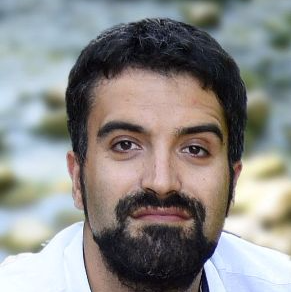Shallow Geothermal Energy in Densely Inhabited Areas
A special issue of Energies (ISSN 1996-1073). This special issue belongs to the section "H2: Geothermal".
Deadline for manuscript submissions: 27 June 2024 | Viewed by 14150
Special Issue Editors
Interests: shallow geothermal energy; groundwater engineering; carbon footprint
Special Issues, Collections and Topics in MDPI journals
Interests: energy efficient buildings and HVAC systems; shallow geothermal energy; indoor and outdoor thermal comfort
Interests: hybrid renewable energy systems; energy efficiency in buildings and HVAC systems; geothermal energy; heat transfer in the ground and exergy analysis
Interests: energy efficiency of building plant system; nearly zero energy buildings (nZEB); building envelope; radiant systems; high efficiency HVAC integrated systems; thermal comfort; renewable energy; ground source heat pump systems; urban energy modelling; modelling and development
Special Issues, Collections and Topics in MDPI journals
Special Issue Information
Dear Colleagues,
Shallow geothermal energy has great potential to avoid pollutant emissions and to reduce the operational costs related to heating and cooling services in buildings. These characteristics make this technology very interesting for large-scale applications in urban areas, as demonstrated by the expansion of open-loop systems (groundwater heat pumps) in several European cities (e.g., Milan, Barcelona, London …). However, this also poses challenges, since shallow geothermal energy is a limited resource that must be properly managed, especially in areas with a high-density heating and/or cooling demand.
The focus of our Special Issue is to provide a platform to discuss the modelling, design and management of shallow geothermal energy in densely inhabited areas. This topic involves many scientific disciplines, including—but not limited to—energy engineering, heat transfer, geology, hydrogeology, chemistry, and economy.
Possible topics include:
- The propagation of thermal plumes from shallow geothermal systems, both closed- and open-loop;
- Geochemical alterations and the possible impact on the ecosystem induced by thermal plumes;
- Subsurface urban heat islands;
- Synergies with other RES that can reduce the thermal impact of shallow geothermal systems;
- The sustainable design and management of underground thermal energy storage applications;
- The potential assessment and advantages of ground-source district heating and cooling systems;
- Free cooling applications based on direct heat disposal underground;
- Energy geo-structures (piles, diaphragms, tunnels, etc.);
- Cost–benefit analysis of ground-source technologies in urban areas compared with alternative RES and no-RES technologies;
- The regional assessment and mapping of shallow geothermal potential with closed- and open-loop shallow geothermal systems;
- Opportunities offered by renewable energy communities;
- Social acceptance of shallow geothermal systems.
Both original research papers and literature reviews will be taken into consideration for publication.
Dr. Alessandro Casasso
Dr. Adriana Angelotti
Dr. Paolo Conti
Dr. Angelo Zarrella
Guest Editors
Manuscript Submission Information
Manuscripts should be submitted online at www.mdpi.com by registering and logging in to this website. Once you are registered, click here to go to the submission form. Manuscripts can be submitted until the deadline. All submissions that pass pre-check are peer-reviewed. Accepted papers will be published continuously in the journal (as soon as accepted) and will be listed together on the special issue website. Research articles, review articles as well as short communications are invited. For planned papers, a title and short abstract (about 100 words) can be sent to the Editorial Office for announcement on this website.
Submitted manuscripts should not have been published previously, nor be under consideration for publication elsewhere (except conference proceedings papers). All manuscripts are thoroughly refereed through a single-blind peer-review process. A guide for authors and other relevant information for submission of manuscripts is available on the Instructions for Authors page. Energies is an international peer-reviewed open access semimonthly journal published by MDPI.
Please visit the Instructions for Authors page before submitting a manuscript. The Article Processing Charge (APC) for publication in this open access journal is 2600 CHF (Swiss Francs). Submitted papers should be well formatted and use good English. Authors may use MDPI's English editing service prior to publication or during author revisions.
Keywords
- shallow geothermal energy
- ground-source heat pumps
- subsurface urban heat island
- thermal plume
- underground thermal energy storage
- ground-source district heating and cooling system








